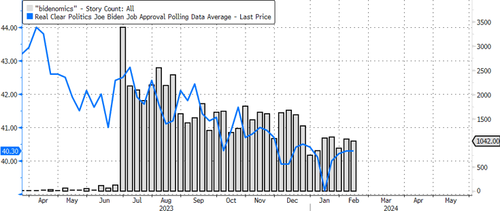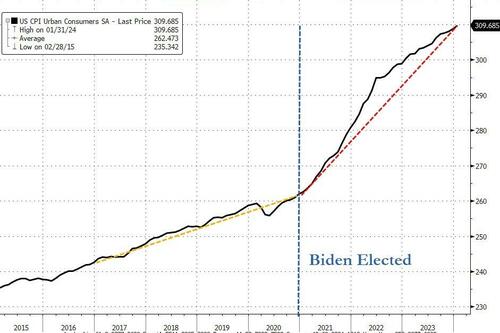Sen. Marco Rubio, R-Fla., who has led attempts to update immigration law, this month rejected a bill that would have given immigration officials more funding and changed how asylum is decided for people arriving at the U.S.’ southwest border.
Rubio justified his decision in a Feb. 11 CNN interview, saying the bill would have led to the hiring of bureaucrats who would easily let people into the country to give them work permits or asylum and a path to citizenship.
“The bill basically creates an asylum corps … thousands of bureaucrats, asylum agents that would be empowered right at the border to either allow people into the country with an immediate work permit,” Rubio said. “Or they have the power to immediately release them and grant them asylum.”
The bill, which failed in the Senate on a 49-50 vote, sought to hire more asylum officers. But Rubio omits that these officers are already part of the immigration system. Currently, they decide the cases of people who already live in the United States and are not in deportation proceedings.
The Senate bill wanted to enable these officials to also decide the cases of new southwest border arrivals who would have applied for asylum as a defense against deportation. Immigration experts questioned Rubio’s characterization that the bill would have made it easier for people to get asylum.
PolitiFact emailed Rubio’s press office for comments but did not hear back.
Although this bill is no longer being considered, asylum law and policies remain major contention points within Congress and in its negotiations with the Biden administration. So, here’s an analysis of the asylum provisions of this bill, which could influence future legislation.
Bill aimed to reduce asylum waiting periods
There’s a backlog of millions of asylum cases that immigration judges and asylum officers must decide. That amount of cases is pending largely because of the high numbers of people applying and the low number of resources available to adjudicate these applications.
The border bill sought to shorten the asylum decision process from years to six months and to expedite the issuing of work permits to eligible migrants. The bill also tried to make it harder to get asylum by raising the initial screening standard and adding new eligibility criteria (if people could move within their own home country to avoid persecution, they wouldn’t be eligible for asylum in the United States.)
Would the bill have created bureaucrats and an ‘asylum corps’?
The bill would have funded the hiring of thousands of new asylum officers who work for the executive branch, specifically the Department of Homeland Security.
But asylum officers have been deciding cases for a long time within DHS’ U.S. Citizenship and Immigration Services, said Kathleen Bush-Joseph, a Migration Policy Institute policy analyst. USCIS handles cases of people who are already in the United States, not necessarily people who are newly arriving at U.S. borders.
Rubio in 2013 co-sponsored a bill that would have enabled asylum officers “under certain circumstances” to grant asylum to people arriving at the border, according to the Congressional Research Service.
Immigration judges, who Rubio suggested he preferred, also are employed by the executive branch, specifically the Justice Department.
Both asylum officers and immigration judges receive extensive training on immigration laws, said Bush-Joseph.
What new powers did the bill try to give asylum officers?
Asylum officers would have had the power to decide the cases of people arriving at U.S. borders. This responsibility has rested only with immigration judges. Also, a newly created board of asylum officers would review case appeals. Currently, immigration courts and the Board of Immigration Appeals (a group of 23 appellate immigration judges within the Justice Department) have this responsibility.
Under the bill, people arriving at the border who seek asylum would have been released from custody and monitored remotely by immigration officials.
Asylum officers would then have had 90 days to interview them and to decide whether there is a “reasonable possibility” that the person is eligible for asylum. People who passed that initial interview could become eligible for work permits and be referred for another asylum interview.
Asylum officers would also have been able to conduct a second interview within 90 days. This is where immigration courts usually step in. The officers’ supervisors would review decisions to give people asylum after the second interview.
There would also be another way to get asylum. During the first interview, if people proved an even higher standard, that they had “clear and convincing evidence,” they would be granted asylum without a second interview. A supervisor would also review that decision.
People not interviewed within the first 90 days would remain in the asylum queue, but become eligible for work permits. (Democratic state and city leaders have asked the Biden administration to issue work permits faster so fewer migrants rely on government services.)
Did the bill make it easier to get asylum?
Rubio gave the impression that asylum officers would be more lenient and approve asylum more often than judges. Immigrant advocacy groups say the opposite.
The “rapid and truncated procedures will undermine the fairness and thoroughness of asylum screenings” the American Immigration Lawyers Association said in a Feb. 5 statement.
The bill made it harder for people to get asylum because immigration judges would not have the power to reverse asylum officers’ decisions, said the National Immigrant Justice Center.
Currently, when asylum officers deny a case, it is sent to immigration courts. In this venue, people may apply for asylum again to prevent their deportation.
Oftentimes, people who are denied asylum by asylum officers are granted asylum by immigration judges, said Bush-Joseph. She said this might be because by then people have had more time to find attorneys who “may be able to find more evidence or experts who can support their case.”












